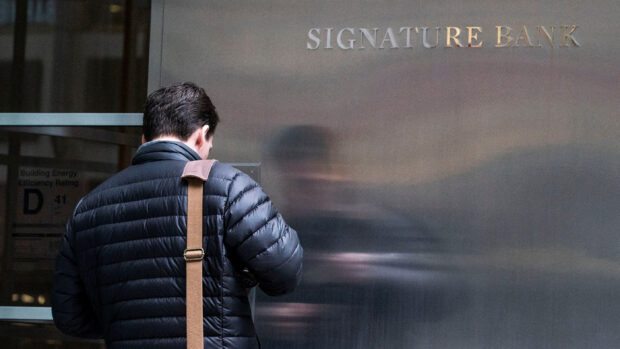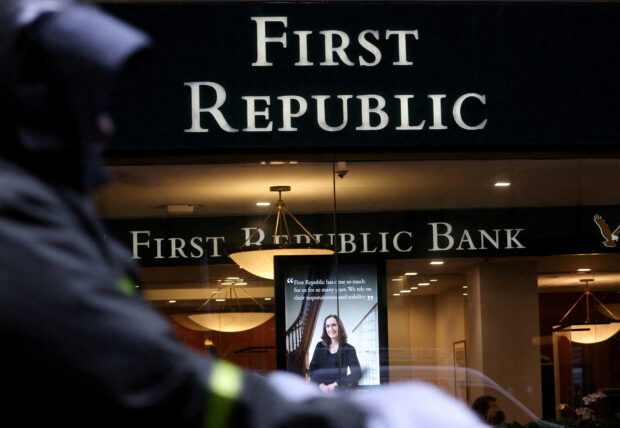US regulators to release reviews of largest bank failures since 2008 crisis
U.S. regulators are set to release confidential details of their oversight of Silicon Valley Bank and Signature Bank in the run-up to the sudden collapses of the regional lenders last month, even as another large financial institution’s struggle for survival in the wake of those implosions plays out in real time.
In back-to-back reports due on Friday, the Federal Reserve and the Federal Deposit Insurance Corp (FDIC) are also expected to float a number of fixes that may lay the groundwork for tougher U.S. bank-sector regulation and supervision ahead – moves likely to elicit pushback from an industry eager to hang onto the regulatory reprieves it won several years ago.
The reports will be released seven weeks to the day from the first of the two collapses and will land as yet another major regional lender, First Republic Bank, faces an uncertain future, potentially posing yet another test for regulators and their quest to maintain financial stability.
In the largest bank failure since the financial crisis a decade and a half ago, financial regulators shuttered Santa Clara, California-based SVB on March 10 after panicked customers pulled $42 billion in deposits in one day and queued up to take out another $100 billion the next day, marking the biggest bank run in U.S. history.

SVB (Silicon Valley Bank) logo and decreasing stock graph are seen in this illustration taken March 19, 2023. REUTERS/Dado Ruvic/File photo
New York-based Signature was closed down two days later after it lost 20 percent of its deposits in the hours after SVB’s failure, and faced mounting withdrawal requests that weekend.
Stunned by the speed of the bank failures and to stem further contagion, U.S. authorities that Sunday opened up fresh emergency lending to banks, pledged to make SVB and Signature Bank depositors whole, and offered broad assurances of more backstops should the financial system come under further pressure from other bank failures.
Article continues after this advertisement
A worker arrives to the Signature Bank headquarters in New York City, U.S., March 12, 2023. REUTERS/Eduardo Munoz
The banking sector stabilized in the weeks following those actions. But turmoil resurfaced this week after First Republic reported its deposits had plunged more than $100 billion in the second half of March.
Article continues after this advertisementA report on Wednesday that the FDIC, First Republic’s regulator, could soon downgrade the bank’s confidential rating, restricting its ability to borrow from the Fed, has fueled speculation over the lender’s future.

First Republic Bank branch in Midtown Manhattan in New York City, New York, U.S., March 13, 2023. REUTERS/Mike Segar/File photo
FDIC regulators had raised the specter of systemic risk from the failure of large regional banks months before the SVB and Signature Bank collapses, records reviewed by Reuters show.
Secrets revealed
The Fed will release its report on SVB at 11 a.m. EDT (1500 GMT) on Friday. The FDIC’s report on its supervision of Signature will be released two hours later.
Fed Vice Chair of Supervision Michael Barr, who led the U.S. central bank’s SVB review, has provided some details on the road to the bank’s end, including what he said were executives’ failure to manage “bread and butter” liquidity and interest-rate risks that played a big role in its unraveling.
And he has said Friday’s report will include the confidential supervisory findings of bank examiners, who called out some of those risks at the fast-growing, tech-focused lender as early as 2021.
But little is understood about the interplay between SVB’s management and supervisors, even as the bank accumulated large holdings of long-term securities that lost market value as short-term interest rates rose, though it did not have to shore up capital to make up for those unrealized losses under the Fed’s rules for banks of its size. It is also not known to what extent examiners focused on the large proportion of uninsured deposits at the bank, a big driver of the run that did it in.
Signature and First Republic were also heavily dependent on uninsured deposits, though most of the money that remains in accounts at the struggling San Francisco-based lender now falls under the FDIC’s deposit insurance limit of $250,000 per customer, its quarterly filing shows.
FDIC Chair Martin Gruenberg has not provided much detail about the supervision of Signature, which like SVB had grown rapidly in recent years.
Analysts have speculated that the banks’ rapid growth may have outstripped management’s ability to prepare for the stricter scrutiny to which banks with more than $100 billion in assets are subject, as well as supervisors’ capacity to properly oversee risks.
The release of the two reports on Friday won’t be the last word on the twin failures: the New York State Department of Financial Services is planning to release a report on its oversight of Signature by Monday, and the California Department of Financial Protection and Innovation plans to issue one on SVB in early May. The Fed’s inspector general will have a report on each bank in the third quarter.
U.S. Representative Patrick McHenry, the Republican head of the House of Representatives Financial Services Committee, and Representative Maxine Waters, the top Democrat on the panel, have requested that the Government and Accountability Office open an investigation into the bank failures. Both the House and Senate are also expected to hold further hearings on the banks, and have expressed a desire for the former CEOs of SVB and Signature to testify.
Barr told Congress in March that he believes it’s appropriate for outsiders to conduct independent reviews of the Fed’s oversight of SVB, in addition to the U.S. central bank’s own review.